What kind of snake is this? Here are some common species Floridians may encounter
Florida is home to 44 native snake species – the most of any other state in the Southeast – so it's not unusual to spot a serpent while you're out and about.
Like most other animals, snakes are important to the environment, helping control rodent populations and other pests.
While snakes are generally feared by people, most snakes in Florida – 37 – are nonvenomous. Only six local species are poisonous.
IRL species: Thousands of animals and plants call the Indian River Lagoon home. Here are just a few.
Whenever a snake slithers into a Florida home, the most common caption used in a social media post is “What kind of snake is this?”
Although the likelihood of coming across a potentially dangerous snake is low, it is important to know how to distinguish the different types.
Here are some of the venomous and nonvenomous species you are likely to come across in Central Florida and what they look like.
Eastern diamondback rattlesnake
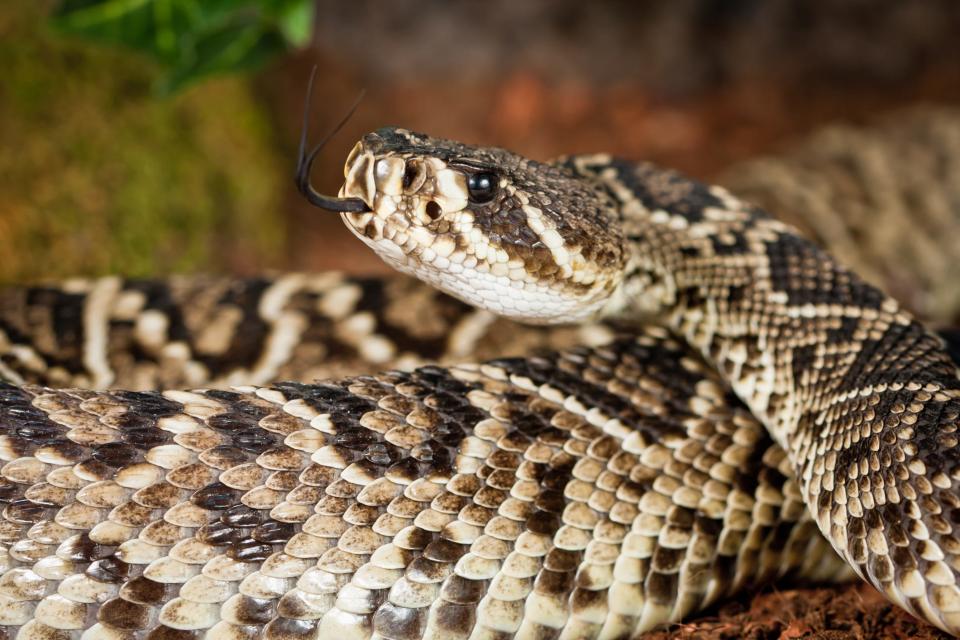
The eastern diamondback is one of Florida's most dangerous snakes.
They are pit vipers, which are different from other snake species and can be identified by facial pits located between the eye and nostril on either side of their V-shaped heads.
According to the University of Florida’s department of Wildlife Ecology and Conservation, the eastern diamondback has a tan, brown or grayish body color and is usually 3-5 feet in size.
Besides the unique rattle at the tip of their tails, “their backs are marked with a row of obvious dark diamonds outlined in cream. Distinct, dark bands, outlined in white, run from the corner of each eye to the corners of the jaw,” according to UF's wildlife department
Black racer
Black racers are perhaps the most familiar and recognizable snake species in Central Florida.
They are known for their solid black body color, and for being unusually fast among snakes.
These nonvenomous snakes are typically 2-4 feet in size by adulthood. When they are young, their gray bodies have irregular reddish-brown blotches that fade with age, according to UF's wildlife department.
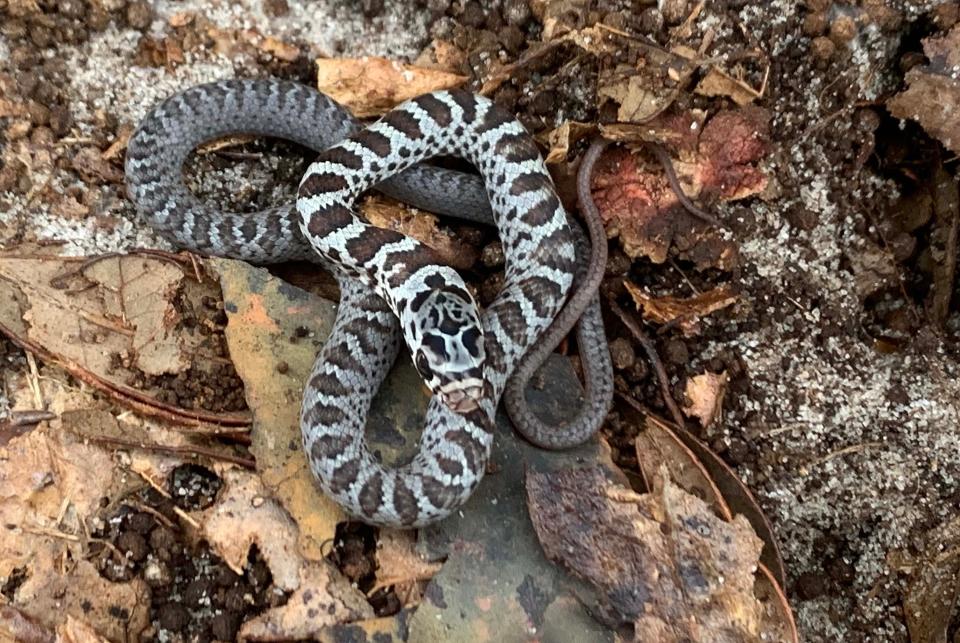
It is especially important to recognize black racers when they are young, since they can be mistaken for another venomous rattlesnake species …
Pygmy rattlesnake
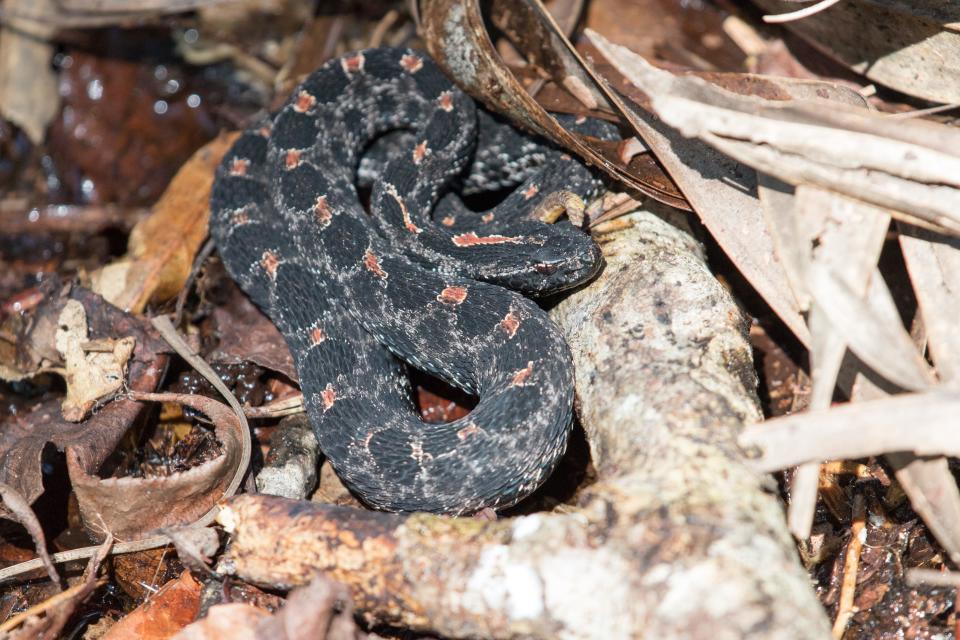
The pygmy rattlesnake is “the most commonly encountered venomous snake in urbanized areas, often in gardens or brush piles,” according to UF's wildlife department.
These pit vipers are usually 1-1.5 feet in size and have a thick and grayish body coloration.
They can be mistaken for the black racer because they have blotches on their backs that are especially dark and are often separated by a reddish-brown stripe down the spine.
'It's just magical': Manatees flock to Blue Spring in west Volusia for holiday cold spell
Southern or banded Watersnake
The banded watersnake is usually 2-3.5 feet in size and are often found in freshwater habitats (rivers, ponds, lakes, swamps, marshes, etc.).
According to the UF wildlife department, their body color ranges from yellow-tan (juveniles) to reddish or grayish brown (adults) and is marked with darker brown and black crossbands that do not extend onto the belly.
The banded watersnake is nonvenomous, but if you spend time by any body of water in Florida, be sure you do not mistake it for another similar but venomous species ...
Cottonmouth or water moccasin
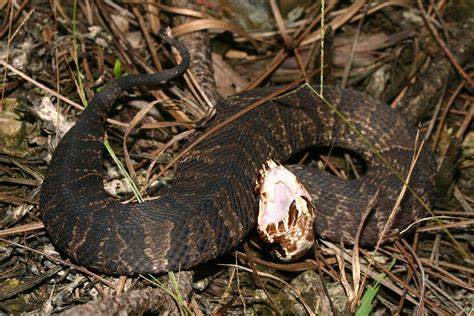
The cottonmouth or water moccasin snake is common in every county and on many coastal islands in the state, according to the Florida Fish and Wildlife Conservation Commission.
When threatened, this pit viper will open its mouth wide, revealing the whitish lining inside – hence the name cottonmouth.
“It is a stout-bodied snake with an abruptly tapering tail and broad flat head much wider than the neck,” according to FWC.
They usually have a reddish-brown back pattern when they are young, which turns into a dark gray-brown (or even solid black) when they get to adulthood. They can be between 2-3 feet in size.
Scarlet kingsnake
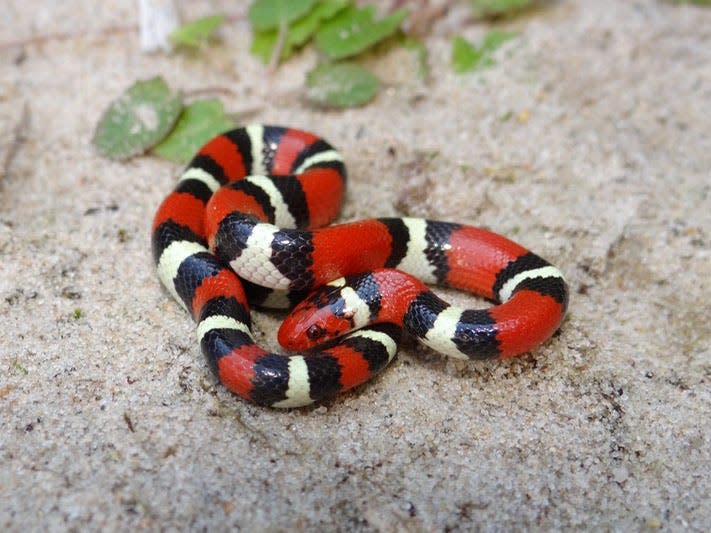
The scarlet kingsnake is a banded, nonvenomous snake that is usually 1-1.5 feet in size.
They can be found in several different habitats, from swamps, bottomland and pinewoods, to agricultural areas and abandoned suburban lots, according to the UF wildlife department.
They are marked with “broad bands that completely encircle the body. Red and yellow-white bands are separated by black bands; yellow-white and red bands never touch.”
"The snout is pointed and red, and a wide black band runs across the back of the head,” according to the UF wildlife department.
Salt marshes: Marine Discovery Center's restored salt marsh, projects show resilience after Ian, Nicole
Their color pattern gives way to perhaps one of the most puzzling (and potentially dangerous) snake species mix-ups with our next example.
Coral snake
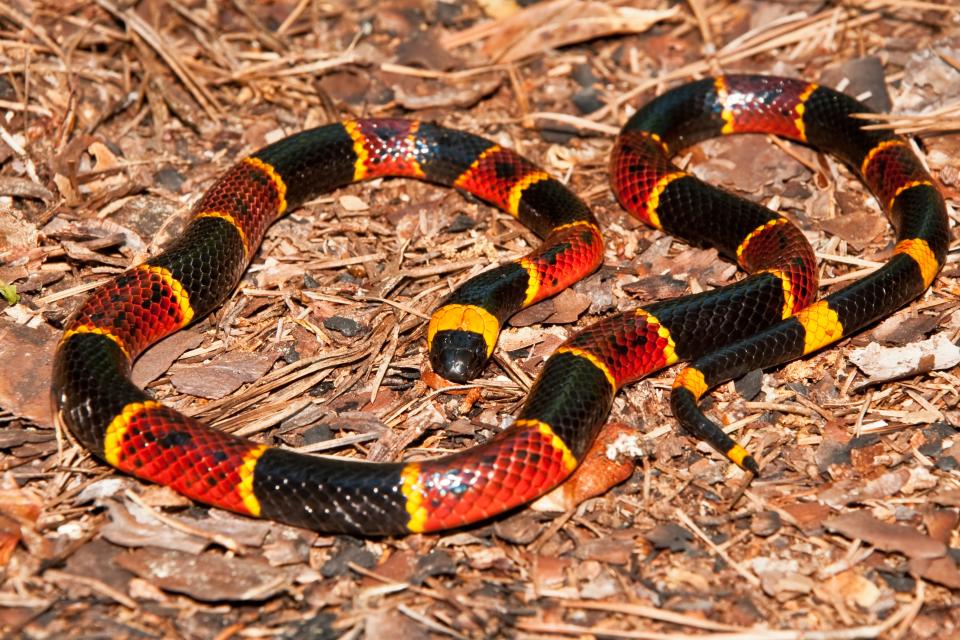
The “elusive” coral snake is a venomous species and is typically 2.5 feet, according to FWC.
They have slender bodies with narrow heads and round eyes – characteristics of nonvenomous species, making them especially dangerous.
The confusion with the scarlet kingsnake comes from their color patterns, which are different despite the similar coloration.
“Red and black bands are separated by slightly narrower yellow bands; red bands often have black speckles,” according to the UF wildlife department. “Think of the colors of a stoplight – if you see yellow bands touching red bands, stop! Snout is rounded and black, and a wide yellow band runs across the back of the head.”
What to do if I am bitten by a snake?
According to the UF department, snake bites are uncommon, with fatal incidents being even less likely.
If it does happen, here's what you should do:
Call 911 immediately. Do not wait until symptoms develop.
Keep the victim calm and comfortable.
Remove rings, watches or restrictive clothing near the bite in case it starts to swell.
Keep the bitten extremity (finger, hand, foot, etc.) below the heart.
Record the time of the bite and symptoms as they develop.
For more information on snake species, visit MyFWC.com.
This article originally appeared on The Daytona Beach News-Journal: 7 snakes found in Central Florida and how to tell them apart

